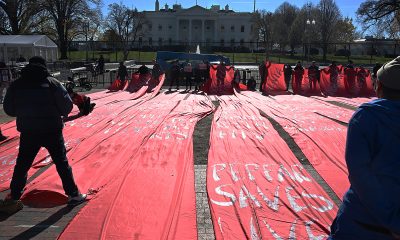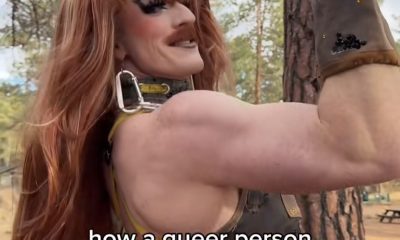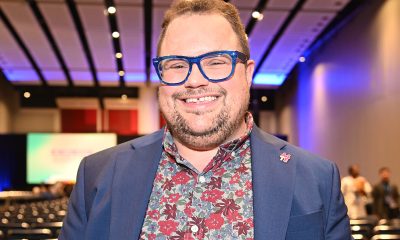National
Romney, in his own (contradictory) words
GOP frontrunner’s tortured history on LGBT rights
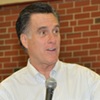
Republican frontrunner Mitt Romney has been criticized as a flip-flopper during his presidential campaign — and although he’s defended himself against accusations that his positions have pivoted on LGBT rights, his record shows that he’s also changed on these issues.
During a Dec. 15 debate in Sioux City, Iowa, when Fox News moderator Chris Wallace said Romney has changed his positions in the last 10 years on abortion, gay rights and gun control, the candidate took exception to this list and said his positions have been consistent on gay rights.
“I’m firmly in support of people not being discriminated against based upon their sexual orientation,” Romney said. “At the same time, I oppose same-sex marriage. That’s been my position from the beginning.”
But an examination of Romney’s previous statements reveals any assertion that he’s held the same positions on LGBT rights — including opposition to same-sex marriage — since the beginning of his political career is false.
From marriage to “Don’t Ask, Don’t Tell” to civil unions to the Employment Non-Discrimination Act, Romney’s positions have wildly changed as he has pursued different offices and public opinion has grown to support LGBT issues.
Most of Romney’s earlier pro-LGBT positions can found in a 1994 letter that he wrote while running as a U.S. Senate candidate in Massachusetts against the late Sen. Edward Kennedy. In the missive, Romney boasted he could go further on gay rights than Kennedy, saying “I will provide more effective leadership than my opponent.”
“If we are to achieve the goals that we share, we must make, we must make equality for gays and lesbians a mainstream concern,” Romney said. “My opponent cannot do this. I can and will.”
Romney pledged to co-sponsor a version of ENDA, and if possible to expand the measure to include housing and credit. The then-Senate candidate also called “Don’t Ask, Don’t Tell,” which had been recently signed into law by former President Clinton, a first step in a process that will “ultimately lead to gays and lesbians being able to serve openly and honestly in our nation’s military.”
But prior to the 2008 election when Romney began pursuing his presidential ambitions, his support for employment non-discrimination legislation and open service vanished.
For example, in a 2006 interview with the National Journal, Romney said when asked about his previous support for that he doesn’t “see the need for new or special legislation” because passage of the bill would open a floodgate of litigation.
In 2007, Romney said during a presidential debate he “was wrong” in thinking “Don’t Ask, Don’t Tell” was a silly idea and said “it seems to be working.” The candidate continued to say repeal would be “a social experiment” and that he “wouldn’t change it” during a time of war.
Asked again during his current campaign about “Don’t Ask, Don’t Tell” during an editorial board meeting with the Des Moines Register in December, Romney pivoted again, saying he’s “not planning on reversing” open service now that wars are over.
Even on marriage, Romney has changed in his opposition to gay nuptials. In an interview with Bay Windows in 1994, Romney said marriage is “a state issue as you know – the authorization of marriage on a same-sex basis falls under state jurisdiction.”
But that position changed after the Massachusetts Supreme Court under his watch as governor legalized same-sex marriage, prompting him to call for a Federal Marriage Amendment.
Still, his vision for a U.S. constitutional amendment banning same-sex marriage has changed even over the course of his current campaign. In an August debate, Romney said marriage isn’t “an activity that goes on within the walls of a state” and said it “should be constant across the country.”
But in a December interview with the Boston Herald, Romney said his vision of a Federal Marriage Amendment would allow existing same-sex marriages to remain intact.
“I think it would keep intact those marriages which had occurred under the law but maintain future plans based on marriage being between a man and a woman,” Romney said.
That vision of allowing states to maintain existing same-sex marriages would, at least temporarily, result in varying laws with respect to marriage for state throughout the country.
LGBT rights groups on the right and left said Romney’s varied positions on LGBT rights demonstrates either a lack of character or his willingness to reconsider his views on the issues depending on the political alignment of the organization.
Jimmy LaSalvia, executive director of the gay conservative group GOProud, commended Romney for repeatedly speaking out against discrimination in debates, despite his changing positions on LGBT issues.
“He’s been consistent in his opposition to discrimination,” said LaSalvia, who’s endorsed Romney. “He has a record of hiring gay people, and, as governor, he appointed gay people to high-level positions.”
Jerame Davis, executive director of the National Stonewall Democrats, said Romney’s varied positions on LGBT rights demonstrates Romney “clearly has no moral compass and will say anything to get elected.”
“The only thing Mitt Romney stands for is Mitt Romney,” Davis said. “On issue after issue — LGBT or otherwise — he has pandered to the least common denominator and allowed the political winds to guide his every word.”
A roundup of Romney’s statements on LGBT issues follows:
On the Employment Non-Discrimination Act
In a 1994 letter to Log Cabin Republicans, Romney said he would co-sponsor ENDA:
“We have discussed a number of important issues such as the Federal Employment Non-Discrimination Act (ENDA), which I have agreed to co-sponsor, and if possible broaden to housing and credit.”
In a 2006 interview with National Review Online, Romney said he no longer supports ENDA:
“I don’t see the need for new or special legislation. My experience over the past several years as governor has convinced me that ENDA would be an overly broad law that would open a litigation floodgate and unfairly penalize employers at the hands of activist judges.”
In a 2007 interview on “Meet the Press,” Romney said ENDA-like laws should be left to the states:
“At the state level, I think it makes sense for states to put in provision of this. I would not support at the federal level, and I changed in that regard because I think that policy makes more sense to be implemented at the state level. If you’re looking for someone who’s never changed any positions on any policies, then I’m not your guy. I learn from experience.”
On ‘Don’t Ask, Don’t Tell’
In a 1994 letter to Log Cabin Republican, Romney called “Don’t Ask” a transitional policy that would lead to open service:
“One issue I want to clarify concerns President Clinton’s ‘Don’t Ask, Don’t Tell, Don’t Pursue’ military policy. I believe that Clinton’s compromise was a step in the right direction. I am also convinced that it is the first of a number of steps that will ultimately lead to gays and lesbians being able to serve openly and honestly in our nation’s military.”
In a 2007 GOP debate at Saint Anselm College, Romney said “Don’t Ask” was working:
“When I first heard of the ‘Don’t Ask, Don’t Tell’ policy, I thought it sounded awfully silly. I didn’t think that would be very effective. And I turned out to be wrong. It’s been the policy now in the military for what, 10, 15 years, and it seems to be working. This is not the time to put in place a major change, a social experiment, in the middle of a war going on. I wouldn’t change it at this point.”
In a June 2011 debate in New Hampshire:
“I believe it should have been kept in place until conflict was over.”
In 2011, he spoke about open service with the Des Moines Register:
“That’s already occurred and I’m not planning on reversing that at this stage. … I was not comfortable making the change during a period of conflict, by virtue of the complicating features of a new program in the middle of two wars going on, but those wars are winding down and moving in that direction at this stage no longer presents that problem.”
On civil unions
From a 2003 document found on the governor’s old website:
A day after the Supreme Judicial Court decision, Gov. Romney told reporters that he believed a civil unions statute would “be sufficient” to satisfy the justices’ concerns. Joining Romney in the call for civil unions legislation was Rep. Eugene O’Flaherty, chair of the House Committee on the Judiciary.
In a 2005 interview with Chris Matthews on MSNBC’s “Hardball” on the difference between civil unions and marriage:
“I’d rather have neither to tell you the truth. I’d rather have domestic partnership benefits, such as hospital visitation rights for same-sex couples. I don’t want civil unions or gay marriage, but there is a difference. Even with just the word, there’s a difference.”
In 2012, a Romney campaign spokesperson reaffirmed the candidate’s opposition to civil marriage:
“[H]e has not been in favor of civil unions, if by civil unions you mean the equivalency to marriage but without the name marriage. What he has favored, and he talked about this, I believe, last night, was a form of domestic partnership or a contractual relationship with reciprocal benefits.”
On LGBT Pride
Text from 2002 Pride flier from Romney’s gubernatorial campaign:
“Mitt and Kerry wish you a great Pride weekend. All citizens deserve equal rights, regardless of their sexual preference.”
In 2012, Romney’s campaign disavowed the letter:
“I don’t know where those pink fliers came from. I was the communications director on the 2002 campaign. I don’t know who distributed them … I never saw them and I was the communications director,” Eric Fehrnstrom said.
On same-sex marriage
Romney in 1994 to gay newspaper Bay Windows:
Same-sex marriage is “a state issue as you know – the authorization of marriage on a same-sex basis falls under state jurisdiction.”
In 2004 testimony before Congress:
I join with those who support a federal constitutional amendment. Some retreat from the concept of amendment, per se. While they say they agree with the traditional definition of marriage, they hesitate to amend. But amendment is a vital and necessary aspect of our constitutional democracy, not an aberration.
In an August 2011 debate:
“Marriage should be decided at the federal level. You might wonder, why is that? Why wouldn’t you just let each state make their own decision? And the reason is, people move from state to state of course in a society like ours. … Marriage is a status; it’s not an activity that goes on within the walls of a state. And as a result, our marriage-status relationship should be constant across the country. I believe we should have a federal amendment to the constitution that defines marriage as a relationship between a man and a woman.”
In a December 2011 interview with the Boston Herald:
Romney expressed support for a constitutional amendment that could create a complex three-tier system of marriage —maintaining marriage rights for straight couples, allowing gays who have already married to remain married, but barring future same-sex marriages.
“I think it would keep intact those marriages which had occurred under the law but maintain future plans based on marriage being between a man and a woman,” Romney said.
In 2011 he told the Des Moines Register:
“I would like to see a national amendment defining marriage as a relationship between a man and a woman. But that was tried maybe three or four years ago. I don’t think that’s likely to receive the necessary support, at least in the near term.”
During a January 2012 debate:
Romney said he’ll advocate for “full rights” for gay people, although he said he remains opposed to same-sex marriage.
“If people are looking for someone who will discriminate against gays or will in any way try and suggest that people — that have different sexual orientation don’t have full rights in this country, they won’t find that in me,” Romney said.
National
Victory Institute to honor Biden at D.C. conference
Former president to receive award on Friday

The LGBTQ+ Victory Institute on Friday will honor former President Joe Biden at its annual International LGBTQ+ Leaders Conference in D.C.
Biden will receive the Chris Abele Impact Award in recognition of what the Victory Institute described as “his historic role in championing LGBTQ+ rights and for his leadership in achieving the most LGBTQ+ inclusive administration in U.S. history.” Biden will be the award’s third recipient.
“President Biden has shown unwavering commitment to ensuring LGBTQ+ people can participate fully and openly in our democracy,” said Victory Institute President Evan Low in a press release. “From appointing a record number of LGBTQ+ leaders to reversing harmful policies and expanding civil rights protections, his administration set a new and necessary standard for what inclusive governance looks like.”
“And now, we’re seeing LGBTQ+ elected officials lead the way on everyday issues that are important to most Americans like groceries, housing, and lowering the costs of healthcare,” he added. “This award honors not only his achievements, but also the real impact these changes have had on LGBTQ+ Americans across the country.”
The conference will take place Dec. 4-6 at the JW Marriott Hotel in Downtown Washington, where more than 700 elected LGBTQ+ political leaders and human rights advocates are expected to attend.
Notable officials slated to participate include Massachusetts Gov. Maura Healey; Maine Gov. Janet Mills; Michigan Attorney General Dana Nessel; Hawaii Attorney General Anne Lopez; Arizona Attorney General Kris Mayes; U.S. Reps. Mark Takano (D-Calif.) and Robert Garcia (D-Calif.); Maine House of Representatives Speaker Ryan Fecteau; Mississippi state Sen. Fabian Nelson; San Antonio Mayor Gina Ortiz Jones; San Diego Mayor Todd Gloria; West Hollywood (Calif.) Mayor Chelsea Byers and Providence (R.I.) Mayor Brett Smiley.
Transgender Spanish Sen. Carla Antonelli, former U.S. Ambassador to Bosnia and Herzegovina Eric Nelson, and Robert Biedroń, a gay member of the European Parliament from Poland, are slated to attend. Earlene Budd, a longtime trans activist in D.C., and D.C. Councilman Zachary Parker (D-Ward 5) are also expected to participate.
Michael K. Lavers contributed to this story.
National
Faith leaders denounce anti-transgender attacks
‘You are holy. You are sacred. We love you.’
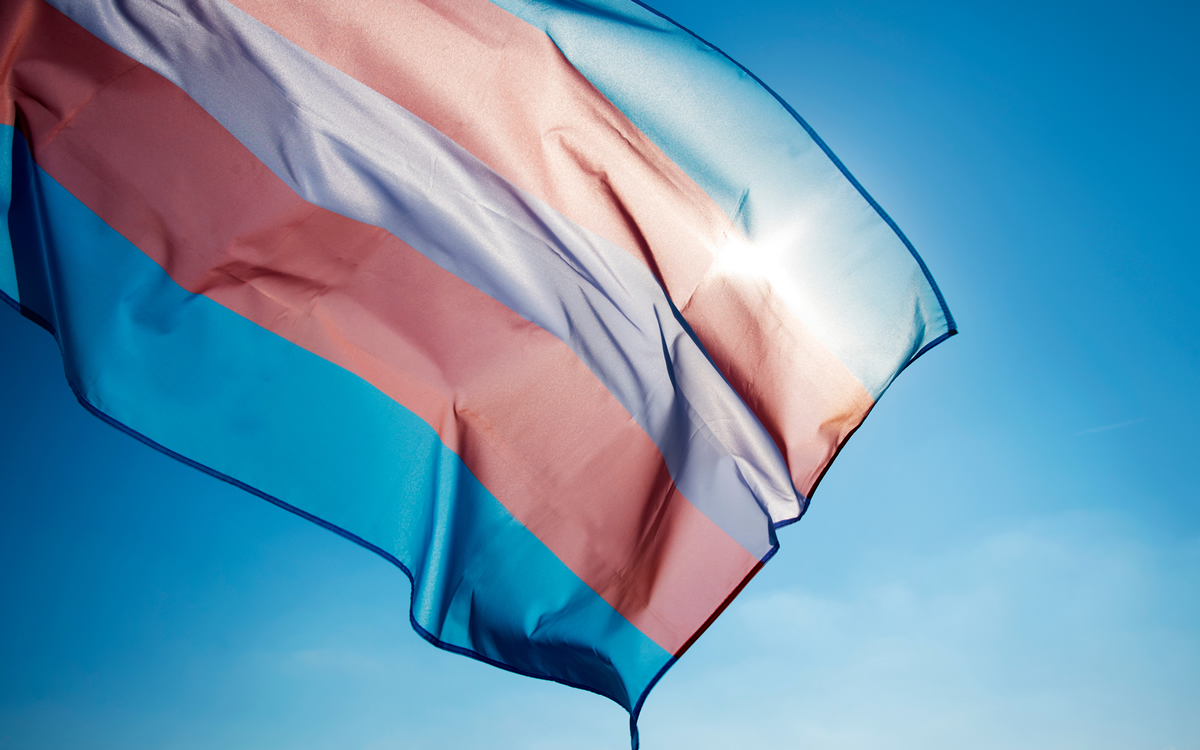
This past Trans Awareness Week, 10 heads of diverse religious traditions issued a statement proclaiming that transgender, intersex, and nonbinary people are worthy of love, support, and protection. Led by Rev. Dr. Sofía Betancourt, president of the Unitarian Universalist Association, representatives from the Universal Fellowship of Metropolitan Community Churches, The Fellowship of Affirming Ministries, the Union for Reform Judaism, the Presbyterian Church, the Christian Church (Disciples of Christ), The Episcopal Church, the United Church of Christ, and Reconstructing Judaism called out the violent and systemic persecution of trans, nonbinary, intersex, and queer people–proclaiming that their faith and their humanity urged them to affirm that trans, intersex, and quere people are “sacred” and “holy.”
Their statement comes at a critical time. Over the past three months, Trump and his Cabinet’s anti-trans rhetoric has only intensified, with a report released late September by journalist Ken Klippenstein in which national security officers leaked that the FBI is planning to classify trans people as “extremists.” By classifying trans people as “Nihilistic Violent Extremists,” far-right groups would have more “political (and media) cover,” as Abby Monteil reports for them, for anti-trans violence and legislation.
While the news is terrifying, it’s not unprecedented – the fight against trans rights and classification of trans people as violent extremists was included in Project 2025, and in the past several weeks, far-right leaders’ transphobic campaign has expanded: boycotting Netflix to pressure the platform to remove trans characters, leveraging anti-trans attack ads in the Virginia governor’s race and banning professors from acknowledging that trans people exist. In fact last month, two Republican members of Congress called for the institutionalization of trans people.
It seems that the government shutdown was predicated, at least partially, on Trump’s own anti-trans policies that were attached as riders in the appropriations bill.
It’s a dangerous escalation of transphobic violence that the Human Rights Campaign has classified as an epidemic. According to an Everytown for Gun Safety report published in 2020, the number of trans people murdered in the U.S. almost doubled between 2017 and 2021. According to data released by the Gun Safety report from February 2024, 34 percent of gun homicides of trans, nonbinary, and gender expansive people remain unsolved.
As Tori Cooper, Director of Community Engagement for the Transgender Justice Initiative for the Human Rights Campaign Foundation, this violence serves a purpose. “The hate towards transgender and gender expansive community members is fueled by disinformation, rhetoric and ideology that treats our community as political pawns ignoring the fact that we reserve the opportunity to live our lives full without fear of harm or death,” Cooper said.
The faith leaders came out in this statement to affirm that it is their spiritual and human imperative to call out this escalating violence and protect trans, nonbinary, intersex, and queer people. The leaders acknowledge that historically and today, religion is used as a weapon of hate to degrade and deny the human dignity of LGBTQ+ peoples. The Supreme Court is hearing Chiles v. Salazar, a case about the constitutionality of a Colorado ban of conversion therapy for minors, with the majority of conversion therapy practices being faith based. And despite the Supreme Court declining to hear a case challenging the constitutionality of same-sex marriage conferred in Obergefell v. Hodges, efforts to end marriage equality remain ongoing with Katy Faust’s End Obergefell movement.
“During a time when our country is placing their lives under increasingly serious threat,” the statement reads, “there is a disgraceful misconception that all people of faith do not affirm the full spectrum of gender – a great many of us do. Let it be known instead that our beloveds are created in the image of God – Holy and whole.”
The faith leaders argue that commendation of LGBTQ peoples and religiously motivated efforts to deny their dignity and rights is not the belief of all faith communities, and far-right Christian nationalist communities and others who uphold homophobia and seek to exact it writ large in the United States do not speak for all faith leaders.
This is a critical piece of the statement and builds on historical precedence. During the 1980s AIDS crisis, when far-right Christian leaders like Jerry Falwell, one of the founders of the Moral Majority, stated that HIV was “God’s punishment” for LGBTQ+ people and indicative of a broader moral decline in America, affirming faith communities came out to affirm the dignity and divinity of queer people. As funeral homes and churches refused to prepare the dead and bury them, some faith communities stepped up to say that these homophobic leaders do not speak on behalf of all people of faith.
In 1985, the United Church of Christ General Synod urged its member congregations to claim and declare themselves “Open and Affirming,” in order to express their welcome and support for LGBTQ+ people, and two years later, the Church of the Brethren issued a statement titled “A Call to Compassion” where conference members urged member congregations to speak out boldly against discrimination, provide direct care to people with HIV/AIDS, and actively educate themselves and others to stop the spread of fear and prejudice surrounding the disease.
Just one year later, the Evangelical Lutheran Church in America Church Council issued a statement, “AIDS and Church’s Ministry of Caring,” which outlined the ways in which welcoming, ministering to and advocating on behalf of people with HIV/AIDS is critical to their mission. Even the US Conference of Catholic Bishops, which earlier this month banned gender-affirming care at Catholic hospitals, issued a statement in 1987 calling discrimination against people with HIV/AIDS “unjust and immoral,” and denouncing the label of “innocent” or “guilty” patients.
Thus, the faith leaders’ statement this past week builds on a rich history of faith communities fighting the stigma that far-right faith groups perpetuate about LGBTQ+ people and committing to action. What sets this latest statement apart is its decidedly interfaith heart, which speaks to the history of the Pride Interfaith Service in Washington, DC that was first started by a group of faith leaders and lay people who gathered at the AIDS Memorial quilt.
As the statement reads, “Our scriptures vary, but they share a common conviction. As we make justice our aim we must give voice to those who are silenced. Our shared values, held across many faiths, teach us that we are all children of God and that we must cultivate a discipline of hope, especially in difficult times. As such, we raise our voices in solidarity to unequivocally proclaim the holiness of transgener, nonbinary, and intersex people, as well as the recognition of the entire spectrum of gender identity and expression.”
The statement ended by arguing that they need to call out the violence they are witnessing. Their silence, they argue, would be in compliance and reinforce the idea that homophobic religious leaders and lay people speak on behalf of all people of faith. Their statement is not only words, however, it is a written promise affirming the dignity and holiness of queer people but also to protect them in the face of increasing violence and persecution.
“When people of faith and conscience stay silent in the face of oppression, we are all made less whole. When people of faith and conscience speak out against that which violates the sacred in its own name, we have the power to stay the hand of sin. Transgender, nonbinary, and intersex people are vulnerable today,” the statement concluded.
“Our faiths, our theologies, and our practices of prophetic witness call on us to say with one voice to transgender people among us: ‘You are holy. You are sacred. We love you. We support you, and we will protect you.’”
The White House
White House halts World AIDS Day recognition amid HIV funding cuts
Trump-Vance administration under increased criticism over policies
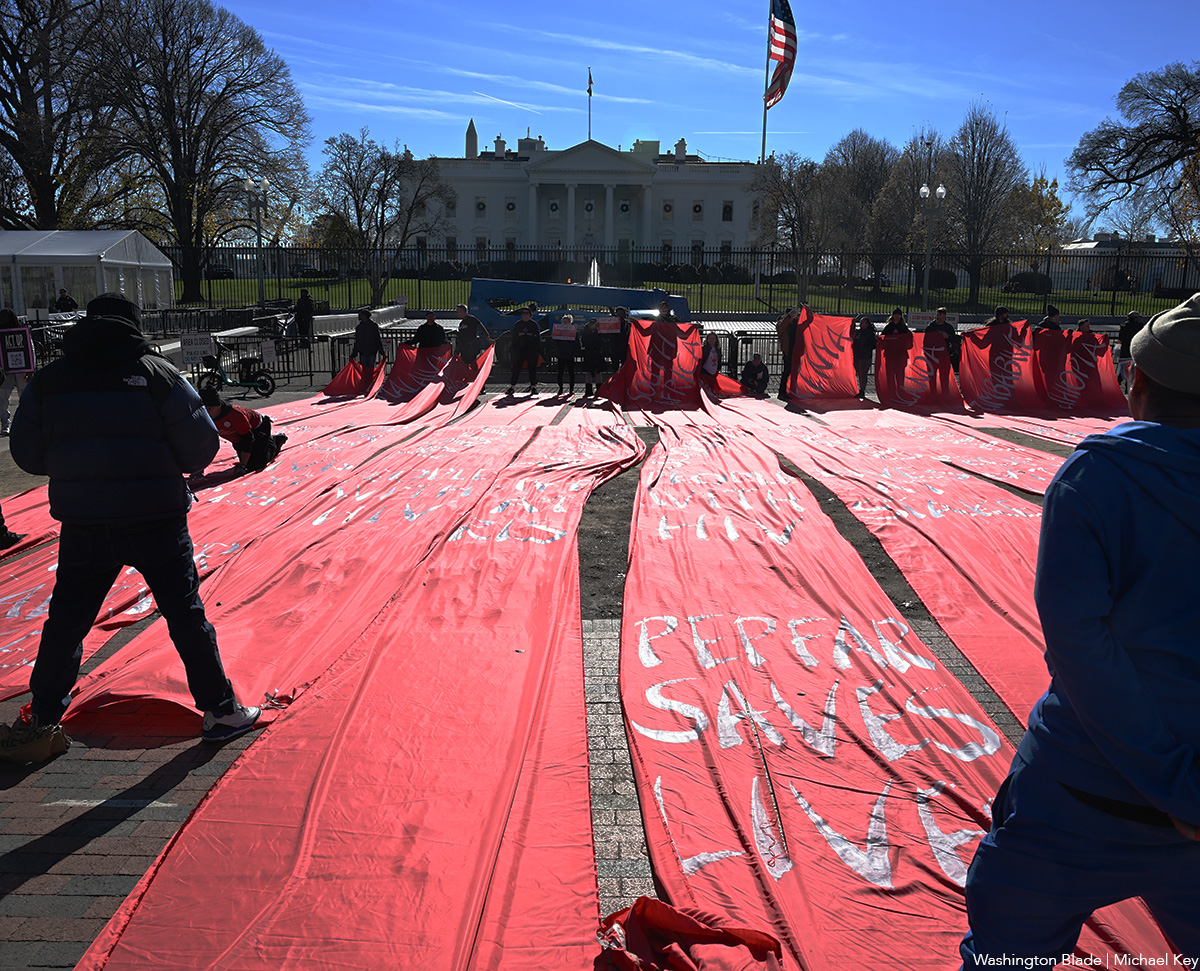
For the first time since the global observance began, the U.S. government did not commemorate World AIDS Day on Monday.
World AIDS Day, first marked in 1988, has long served as an annual reminder of the ongoing effort to end an epidemic that has killed more than 44.1 million people worldwide and continues to disproportionately impact LGBTQ people, communities of color, and those in the American South. Yet the Trump-Vance administration declined to acknowledge the day this year, severing a symbolic but consistent tradition upheld by every president since Ronald Reagan.
The move comes despite the scale of the epidemic today. Approximately 1.2 million people in the U.S. are living with HIV, according to federal estimates, and about 13 percent — 158,249 people — do not know their status. Globally, the World Health Organization reports 40.8 million people were living with HIV at the end of 2024.
Presidents of both parties have historically used World AIDS Day to highlight progress, remember lives lost, and recommit to reducing disparities in prevention and treatment. Past administrations have also commemorated the day through displays of the AIDS Memorial Quilt — first created in 1987 and later spread across the National Mall and White House lawn. Today, the quilt includes the names of more than 94,000 people lost to AIDS on more than 47,000 panels.

This year’s silence from the White House follows several sweeping foreign aid rollbacks instituted by President Donald Trump after his 2024 inauguration. According to an October report by KFF, the administration enacted a “90-day review of foreign aid; a subsequent ‘stop-work order’ that froze all payments and services for work already underway; the dissolution of USAID, including the reduction of most staff and contractors; and the cancellation of most foreign assistance awards.”
These cuts have created significant funding gaps for nongovernmental organizations around the world — many of which work directly to prevent HIV transmission and expand access to lifesaving treatment.
The State Department dismissed criticism of the administration’s decision not to acknowledge World AIDS Day.
“An awareness day is not a strategy. Under the leadership of President Trump, the State Department is working directly with foreign governments to save lives and increase their responsibility and burden sharing,” deputy spokesperson Tommy Pigott said in a statement CNN first reported. “Earlier this year, we released a global health strategy aimed at streamlining America’s foreign assistance and modernizing our approach to countering infectious diseases.”
The U.S. historically played a central role in the global HIV response. Since 2003, the United States has been the largest financial supporter of HIV/AIDS programs — primarily through President George W. Bush’s PEPFAR initiative, which has invested more than $110 billion into the fight to end the epidemic.
Despite overall declines in transmission, HIV continues to disproportionately affect racial and ethnic minorities, LGBTQ people, and men who have sex with men. More than half of new HIV diagnoses occur in the South.
The Centers for Disease Control and Prevention’s Ending the HIV Epidemic in the U.S. initiative focuses on the 48 counties, D.C., San Juan, Puerto Rico, and seven rural states that accounted for more than half of all new diagnoses in 2016 and 2017.
Advocates say the administration’s withdrawal from World AIDS Day — combined with its cuts to foreign and domestic health programs — risks reversing hard-won gains.
“Though new HIV infections declined 12 percent from 2018 to 2022, progress is uneven with Black people accounting for 38 percent of new diagnoses, Latino people accounting for 32 percent of new diagnoses and more than half (52 percent) of new HIV diagnoses were among people living in the South,” Jarred Keller, senior press secretary at the Human Rights Campaign, told the Washington Blade via email. “Cuts to CDC funding have driven HIV prevention resources to historic lows, stripping support from HIV-focused programs.”
Legal and public health experts echoed that concern, saying that there is a possibility to stop HIV/AIDS, but only if efforts are taken gradually over time.
“HIV is a preventable and treatable condition, but only if the research, organization, and effort continue to be a priority to those looking out for the health of Americans and people worldwide,” said Lambda Legal HIV Project Director Jose Abrigo.


